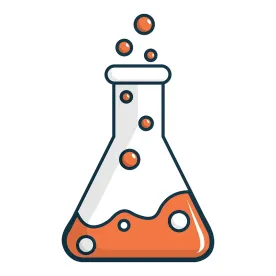Late last week four Colombian agencies—including the ministries of health (Ministerio de Salud y Protección Social), labor (Ministerio del Trabajo), commerce (Ministerio de Comercio, Industria y Turismo), and the environment (Ministerio de Ambiente y Desarrollo Sostentible)—posted for comment a draft decree that would impose sweeping changes to regulations governing chemicals in industrial use. See Decreto Número ___ de 2020, Por el cual se reglamenta la gestión integral de las sustancias químicas de uso industrial y se toman otras determinaciones (the Decree). The Decree would create a new interministerial chemicals coordinating agency, a chemicals inventory, a registry for new-use chemicals, requirements for risk assessments and risk management plans, a toxic release inventory, and a host of new obligations for all entities in the chain of commerce, from producers to users, in Colombia. An earlier version of the initiative was proposed in 2017; this recent version includes significant changes.
The Decree would provide a framework and leaves to future regulation most of the details, requiring competent agencies to complete the rulemaking within two years. If enacted as proposed, the Decree would usher in long-standing structural changes to Colombia’s chemical management system that would likely be in place for years to come. Adoption of the Decree seems likely in light of Colombia’s recent accession to the Organisation for Economic Co-operation and Development (OECD), which the preamble cites as an impetus for the Decree.
Comments are due quickly on July 31, 2020 and may be submitted electronically via email to the following officials: ralarcon@minambiente.gov.co and jcsanchez@minambiente.gov.co.
Highlights of the Decree
Purpose and New Agency
The Decree intends to establish a multi-faceted management system for chemical substances of industrial use that have been identified and classified as hazardous under the Globally Harmonized System of Classification and Labelling of Chemicals. (Decree, Art. 1.) To coordinate and evaluate the implementation of the new regime, the Decree would create a new interministerial agency, the Intersectorial Commission for Following the Management of Chemical Substances for Industrial Use (CISQUIN). (Decree, Art 16.) CISQUIN would be comprised of members from each of the four agencies.
Scope and Exemptions
The key scope terms “chemical substance” and “industrial use” are defined broadly, but the Decree would exempt several categories of substances.
- Chemical Substance is defined as: a chemical element in its natural state or obtained through any production process, including additives necessary to ensure product stability as well as the impurities that result from the process utilized but excluding the solvents that can be separated without affecting the stability of the substance or modifying its composition. (Decree, Art. 3.)
- Industrial Use is defined as: any transportation, formulation, consumption, storage, conservation, treatment, packaging, transfer, mixing, or production of an article or any other utilization of a chemical substance in the industry. (Decree, Art. 3.) (Note: “article” is not defined.)
Exempt categories include:
- Substances that are subject to other Colombian regulations, including pesticides, pharmaceuticals, explosives, narcotics, psychotropic substances, radioactive substances, medicines, cosmetics, food additives and domestic hygiene products, diagnostic reactions for in vitro use, fertilizers and soil conditioners, mercury, and chemicals regulated by the Chemicals Weapons Convention;
- Naturally occurring substances without chemical processing (excluding any form of asbestos);
- Polymers (but not their constituent monomers);
- Substances in transit through customs;
- Intermediate substances that are not separated; and
- Samples without commercial value.
(Decree, Art. 2.)
New Regulatory Mechanisms
The Decree sets forth four new mechanisms for managing regulated chemicals, including: (1) a National Inventory; (2) a Registry; (3) risk evaluation requirements; and (4) programs for reduction and risk management. (Decree, Art. 4.)
National Inventory
The National Inventory would be a database of information about chemical substances that are produced in or imported into Colombia. (Decree, Art. 5.) Anyone who, in the last five years from the effective date of the Decree, has manufactured or imported more than 100kg per year of chemicals for industrial use, whether in “pure” form or as constituents incorporated into mixtures, must provide the following information:
- Identification of the manufacturer or importer of the chemical substance;
- Quantity of the annual production or import of the chemical substance;
- Identification of the chemical substance, including the CAS number;
- Classification and identification of hazardous consistent with GHS; and
- Identified uses.
(Decree Art. 4.) The Decree would establish a one-year deadline to submit the information, after which the same reporting requirement would recur annually with a March 31 submission deadline. (Decree, Art. 4, P1 and P2.)
Registry
The Decree would also create a Registry of Chemical Substances of Industrial Use, defining its purpose as a mechanism for capturing more “specific” information about regulated chemicals. (Decree, Art. 6.) At a minimum, the required information for such chemicals would include Safety Data Sheets (SDS), persistent properties, zones of storage or production, and the sources of information used to identify classification of the hazards of the substances. (Decree, Art. 6.)
Unlike the Inventory, the Registry would go into effect only after implementing rules are promulgated. The Decree would set a two-year deadline for the ministries of commerce, health, and environment to develop rules for the Registry. (Decree, Art. 6.)
Risk Evaluations for New Chemicals
Once the Registry is established, if an importer or manufacturer intends to import a chemical that is not on the Registry, or for a use not previously reported, two risk evaluations would be required, one relating to health effects and one related to environmental impacts. (Decree, Art. 7.) The Decree does not define a “risk evaluation” or outline basic elements of what these risk evaluations would entail. Instead, the Decree would leave entirely to the ministries of health and the environment the authority to develop guidelines for preparing risk evaluations within their respective jurisdictions. (Id., Arts. 8, 9.) The ministries would also determine what permanent information producers and importers would be required to publish on their websites or other mass distribution systems and make available to users and authorities. (Id.)
Programs for Reduction and Risk Management of Chemicals
After the Registry rules have been completed, in order for a chemical to be imported or manufactured, manufacturers and importers would be required to have programs for reducing and managing both health and environmental risks of the chemicals, according to their identified hazards. (Decree, Art. 10.) The Decree does not define what these programs would entail. As with its treatment of risk evaluations, the Decree leaves entirely to the ministries of health and environment the authority to define and develop guidelines for these programs. (Decree, Arts. 11, 12.) The ministries would also define what permanent information manufacturers and importers would be required to publish on their websites or other mass distribution systems and make available to users and authorities. (Id.)
Emissions Monitoring and Discharge
The Decree is not limited to regulation of chemical substances as products, but requires the ministry of the environment to develop a type of toxic release inventory (TRI). In a far-reaching proposal, the Decree would require the ministry to develop regulations that create mechanisms for capturing and analyzing information resulting from monitoring of emissions, discharges of regulated substances into air, water, and soil, including transfer of the contaminants outside of the industrial activities. (Decree, Art. 14.)
In similar vein, the ministry of health is required to develop a system for managing toxicological information to assess and assist in the prevention, diagnosis, and treatment of adverse effects from exposure to regulated substances and provide information about the need for any type of treatment required. (Decree, Art. 15.)
Obligations on Private Parties
The Decree sets forth a host of new requirements on entities in the chain of commerce, including obligations for importers and manufacturers, marketers and distributors, transporters, and users. These requirements will need to be fleshed out in future regulations, but can be generally grouped into: (1) properly managing regulated chemicals; (2) preparing and submitting required information to the Inventory and Registry; and (3) posting information about their chemicals on websites that are available to the public. (Decree, Arts. 19-22.) The Decree outlines a number of requirements governing the development and mutual acceptance of information, including provisions addressing confidential information. (See generally, Chapter IV.
The author acknowledges Melissa Owen of Ambientelegal for her collaboration monitoring these legal developments.





 />i
/>i
